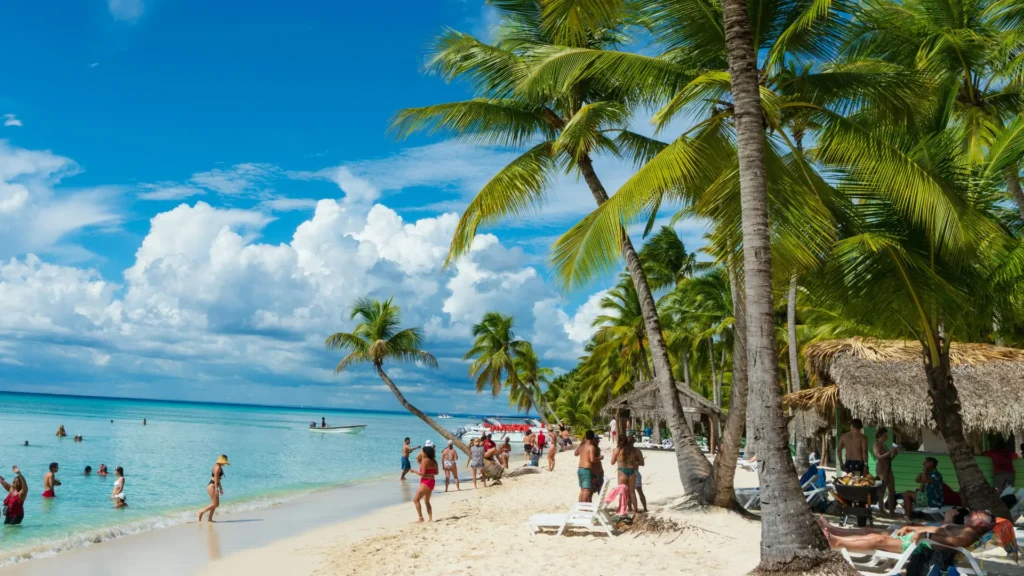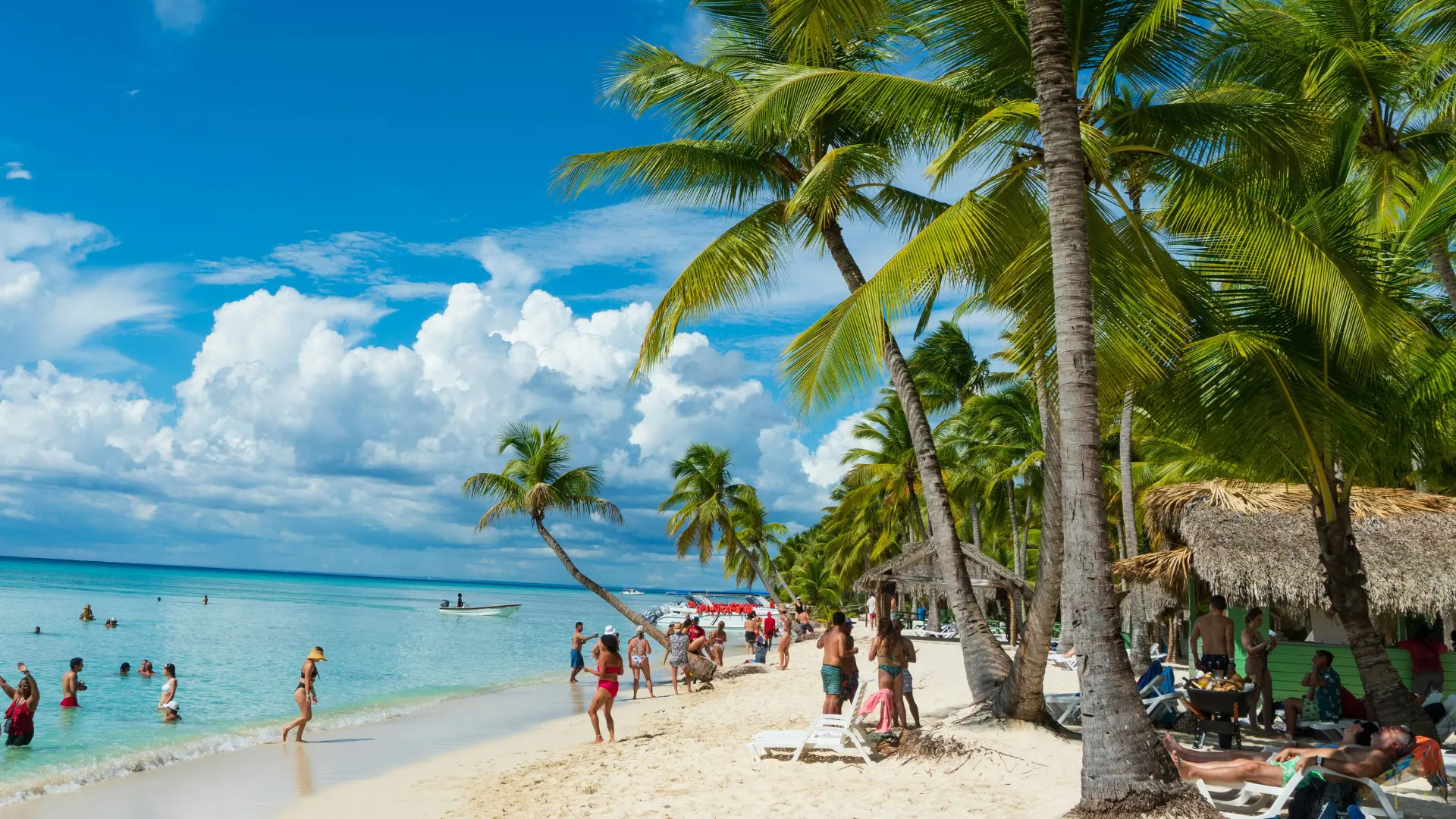There’s something magnetic about the Dominican Republic — the music, the rhythm of the waves, the warmth of its people, the lush green of its inland mountains. You might be picturing your feet in the white sand, eyes on an endless blue horizon, maybe even a rum cocktail in hand. But just as you’re about to click “Book Now,” a quiet thought intrudes: Is it actually safe to go?
This isn’t about fear. It’s about being informed, cautious, and responsible. That’s where the Dominican travel advisory 2025 comes into play. Whether you’re a solo traveler, a couple on a honeymoon, or a family planning a Caribbean retreat, knowing what’s happening on the ground — politically, medically, and socially — can mean the difference between a smooth, enjoyable trip and one riddled with unnecessary risks.

Table of Contents
Understanding the Dominican Travel Advisory (2025 Update)
What Is a Travel Advisory and Why Should You Care?
A travel advisory isn’t just bureaucratic noise. It’s a government-issued warning system that signals potential safety issues in a destination country. Issued by authorities like the U.S. Department of State, Global Affairs Canada, or the UK Foreign Office, advisories are ranked from:
- Level 1: Exercise normal precautions
- Level 2: Exercise increased caution
- Level 3: Reconsider travel
- Level 4: Do not travel
These levels reflect risks including crime, terrorism, health outbreaks, political instability, or natural disasters.
Knowing how to read and respond to these levels lets you plan smarter — and safer.
What’s the 2025 Dominican Republic Travel Advisory Level?
As of the latest update, the U.S. State Department has listed the Dominican Republic as Level 2: Exercise Increased Caution. This means that while most travel is safe, there are risks in specific areas or under certain conditions.
Key concerns flagged:
- Street crime in urban zones
- Health system capacity in rural areas
- Minor political protests (largely peaceful)
Tip: Always double-check the most current status on travel.state.gov before departure.
Is It Safe to Travel to the Dominican Republic in 2025?
The short answer? Yes — if you take precautions.
Areas Where You Can Relax and Enjoy
Many of the Dominican Republic’s top tourist areas are well-patrolled and generally considered safe:
- Punta Cana: World-renowned for its all-inclusive resorts and airport security.
- La Romana: A quieter gem with upscale hotels and a strong tourism infrastructure.
- Samana Peninsula: Perfect for eco-tourism lovers, relatively low crime.
- Santo Domingo’s Colonial Zone: Rich in history, though caution is advised after dark.
Regions Where You Should Exercise Extra Caution
While the country’s core is welcoming, some zones have higher incidents of petty theft, scams, or lack of infrastructure:
- Certain neighborhoods in Santo Domingo, especially beyond tourist districts
- Border areas near Haiti due to instability
- Isolated rural zones with poor lighting and fewer emergency services
Important Note: Always inform someone of your travel plans, especially if heading off-resort.
Health & Safety Tips for Dominican Travel in 2025
Ongoing Health Concerns You Should Know
Even in paradise, health is key. The Dominican Republic has improved its public health systems but still poses some risks:
- COVID-19 variants: Vaccinations required or recommended
- Dengue & Zika virus: Mosquito protection is a must
- Traveler’s diarrhea: Stick to bottled or purified water
Source: Check the CDC travel page before departure.
How to Stay Safe While Exploring
Here are key actions that dramatically reduce your risk:
Safety Checklist:
- Keep your passport in a hotel safe
- Avoid walking alone at night
- Use official taxis or hotel-arranged drivers
- Leave flashy jewelry and expensive gear at home
- Avoid ATM use at night or in secluded areas
Legal & Cultural Essentials: Respect and Awareness
Laws Tourists Often Overlook
You don’t want your vacation to turn into a courtroom drama. Be aware of these Dominican laws:
- Drug laws are strict: Even small quantities can lead to jail.
- Drinking in public: Legal in tourist zones, illegal elsewhere.
- Photographing police or military: Often prohibited.
Cultural Sensitivities
Dominicans are warm, proud people. Understanding a few basic customs can earn you respect and better experiences:
- Dress modestly in town (resort wear is for resorts).
- Greet with “Buenos días” or “Buenas tardes.”
- Avoid discussing local politics with strangers.
Travel Insurance & Emergency Resources
Why Travel Insurance Is a Non-Negotiable in 2025
You never plan to get sick or lose your passport — but when you do, insurance becomes your lifeline. Choose a policy that includes:
- Emergency medical coverage
- Evacuation support
- Trip cancellation or interruption
- Lost luggage protection
Dominican Emergency Resources Table
| Service | Contact Info | Purpose |
|---|---|---|
| U.S. Embassy | +1-809-567-7775 | Lost passport, legal help |
| Tourist Police (CESTUR) | 1-809-222-2026 or 911 | Tourist safety & crime help |
| Emergency (General) | 911 | Fire, medical, police |
| Hospital Metropolitano de Santiago (HOMS) | +1-809-226-7777 | Modern medical center |
Pro Tip: Save these numbers in your phone before arriving.
Dominican Republic Travel Requirements for 2025
Entry Protocols: What You Need
You’ll need the following to enter the Dominican Republic:
- Passport valid for at least 6 months
- No visa required for stays under 30 days (for most countries)
- Completion of E-Ticket Form for immigration/customs
Departure Rules: Don’t Get Caught Off-Guard
- Departure tax often included in airline ticket
- You must complete an exit E-Ticket
- Customs may ask about souvenirs, electronics, or food products
What to Pack: Stay Safe, Smart, and Stylish
Essentials Packing List
Here’s what smart travelers pack for a smooth Dominican adventure:
- Light cotton clothes + 1 dressy outfit
- Sunscreen (reef-safe for beach-goers)
- Bug spray (DEET or natural)
- Travel-size first-aid kit
- Universal adapter and phone charger
- Waterproof bag for beach or boat days
Tech & Travel Apps
Use these apps to stay connected and aware:
- Google Translate (Spanish ⇄ English)
- Maps.me (offline maps)
- Currency Converter
- TripIt (itinerary tracker)
- WhatsApp (free local communication)
Where to Stay Based on Travel Advisory Insights
Top-Rated Safe Resorts
For security and comfort, opt for resorts with strong reputations and on-site amenities.
Recommended:
- Hyatt Ziva Cap Cana
- Casa de Campo Resort & Villas
- Iberostar Grand Bávaro
- Bahia Principe Luxury Ambar
These places feature:
- Gated security
- 24/7 staff support
- Emergency protocols
- Bilingual services
Tips for Booking Accommodations
- Use verified platforms (e.g., Airbnb Superhosts, Booking.com, Hotels.com)
- Avoid last-minute street-side offers
- Read recent reviews for mentions of theft, noise, or safety issues
Conclusion:
Planning to visit the Dominican Republic doesn’t mean ignoring reality — it means embracing it with eyes open. You don’t want your dream trip clouded by what-ifs or overlooked details. The Dominican travel advisory 2025 empowers you to make informed decisions, avoid the pitfalls others fall into, and fully enjoy what this vibrant Caribbean island has to offer.
So go ahead — chase those sunsets, dance to merengue, taste the mofongo — but do it wisely, with this guide as your travel companion.
FAQ : Dominican Travel Advisory
Is the Dominican Republic safe in 2025?
Yes, the majority of travelers visit without issues. Exercise increased caution, particularly in urban or non-tourist areas.
What does the U.S. travel advisory say?
As of 2025, the Dominican Republic is Level 2: Exercise Increased Caution. Stay informed via official sources.
Can I travel alone to the Dominican Republic?
Yes, especially to resort towns like Punta Cana or Samana. Solo travelers should follow general safety guidelines.
Do I need travel insurance to visit?
It’s not legally required, but strongly recommended — especially for medical coverage and flight disruptions.








Leave a Reply